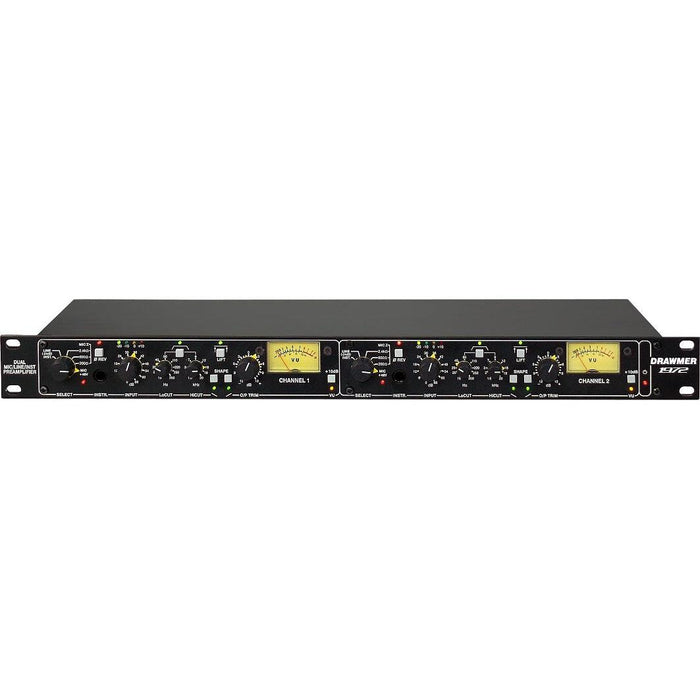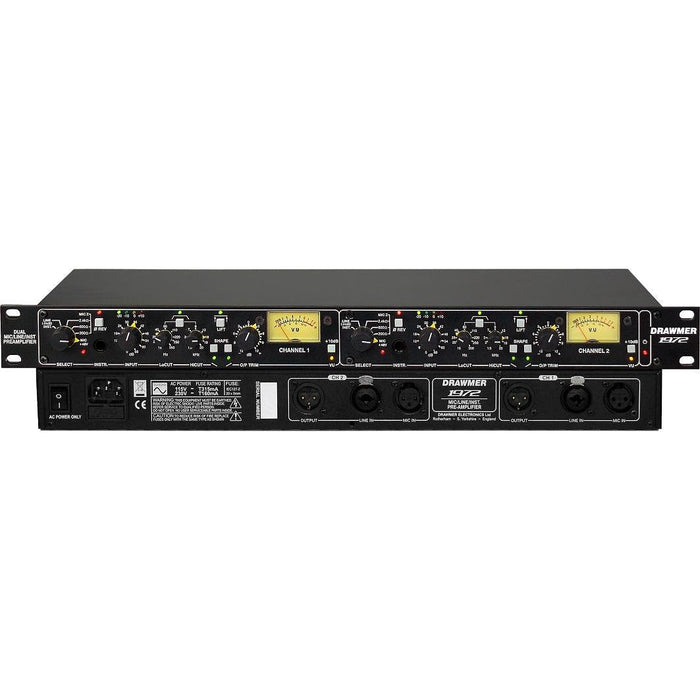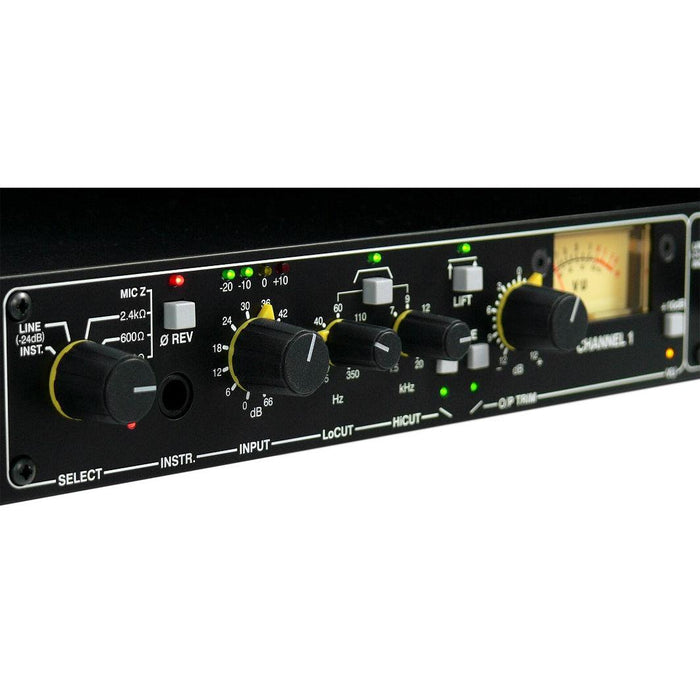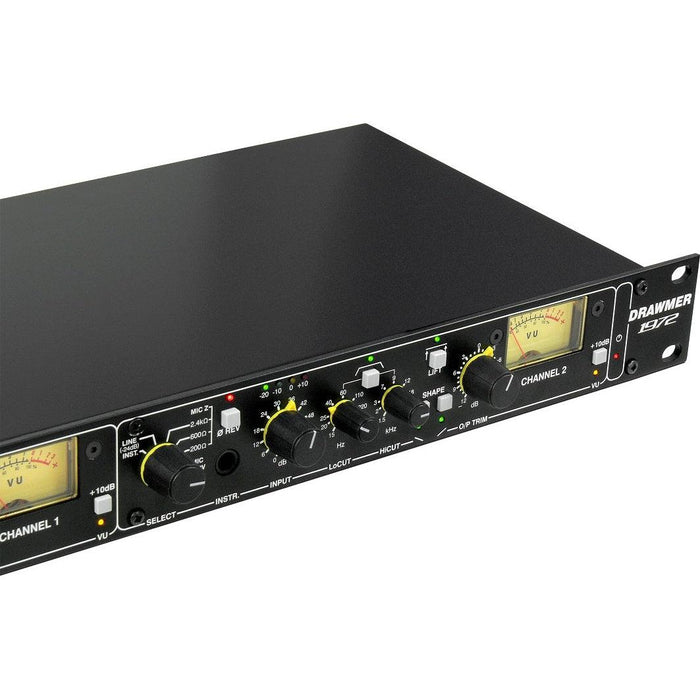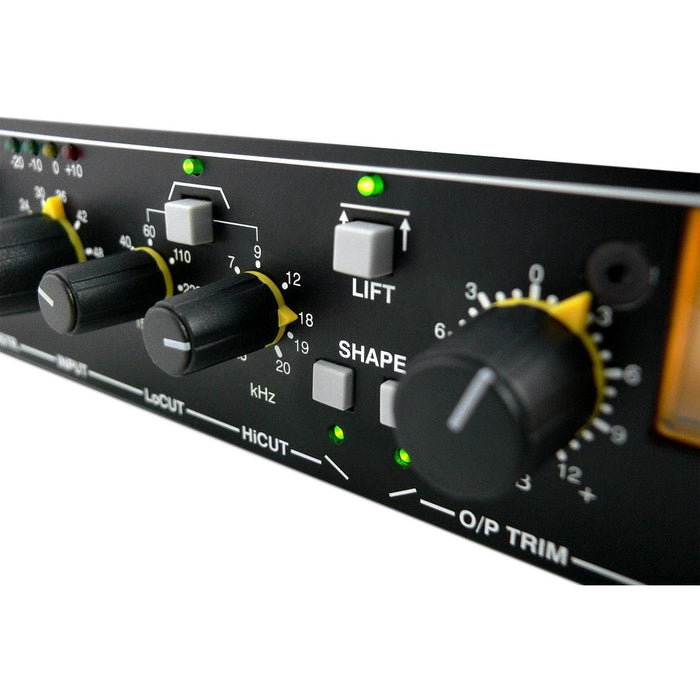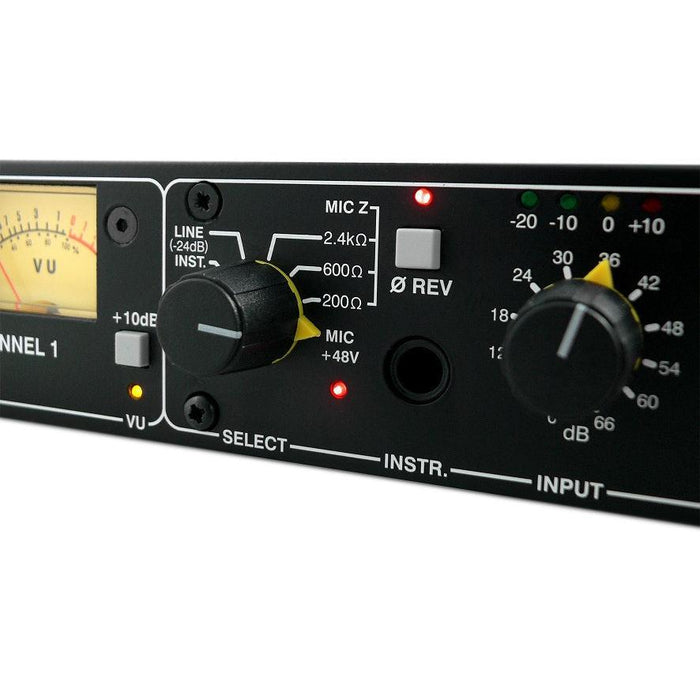Unique 2-channel microphone preamplifier
It's not just sales gas when we call 1972 unique. It simply has features that no other preamp on the market can boast of. The focus has been on developing as versatile a preamplifier as possible, so that all types of microphones and recording situations can be met.
THAT Corporation preamps
THAT Corporation may not be a name that comes to mind when talking about preamps, but THAT is actually one of the world's leading suppliers of ultra-high quality integrated circuits. You can choose from standard shelves, or ask them to develop special editions. In 1972, that means a degree of versatility no other preamp on the market can match. Here is up to 66 dB gain in 6 dB steps, and there is an additional +/-12 dB output gain if additional boost is needed. The input impedance can be switched between 200, 600 and 2400 Ohms, so that you can match the impedance to the microphone, but also experiment with timbre by trying different impedances.
A little out of the ordinary
Naturally, we find expected features like Phase Reverse and High Pass, but 1972 takes control of your sound to a whole new level. This makes it possible to get good results even with sources or environments that are traditionally difficult to capture. There are fully variable High and Low Cut filters, so you can filter bottom and top very precisely and avoid rumble or white noise. The Shape function also adds a tilt EQ that can angle the spectrum both in the direction of bass and treble - even simultaneously.
Lift - a stroke of genius from Drawmer
The completely newly developed Lift circuit makes it possible to capture extremely dynamic sources without risking overdrive. This is achieved by the circuit ignoring signals above 0 dB, so that even very weak signals can be captured with weight and clarity, without affecting the other dynamics. It is perfect for piano, vocals (both spoken and sung) and for capturing background sound.
Mic/Line/Hi-Z
Both channels are identical, and on the back we find both microphone input on XLR and line-level on combo Jack/XLR. This means that you can have both parts connected and change the input on the front. While we're talking about the front - here you'll find an additional HI-Z instrument input per channel, so no matter which source you need to record, you're covered.
